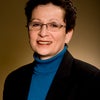
When I go to Seneca Falls, New York (the birthplace of women's rights), I marvel that so much activism took place during the 1800s in what we now call upstate New York, particularly in the Finger Lakes Region. Activists in the area were advocating for abolition, women's rights and temperance. See if you can match the woman activist to her accomplishment (answers at the end):
_____ 1. She made 19 trips to the South to rescue people from slavery.
_____ 2. Often seen as the face of the women's rights movement, she was arrested in 1872 for voting, found guilty and fined.
_____ 3. After organizing the first women's rights convention in Seneca Falls in 1848, she worked on women's suffrage for 50 years.
_____ 4. A renown women's rights activist, the following quote is carved on her tombstone: "There is a word sweeter than Mother, Home or Heaven; that word is Liberty."
_____ 5. An abolitionist, suffragist and supporter of educator, particularly for African-American students, she eventually made regular contributions to thirty schools.
A. Elizabeth Cady Stanton
B. Emily Howland
C. Harriet Tubman
D. Susan B. Anthony
E. Matilda Joslyn Gage
Although born a slave in Maryland, Harriet Tubman has significant ties to the Finger Lakes Region. She made 19 trips back to the South to rescue an estimated 300 enslaved people and was a fearless conductor (nicknamed "Moses") on the Underground Railroad. Tubman purchased property in 1857 in Auburn, New York (a transaction that was illegal at the time) in which her parents lived. Later, she also lived on the property. Today, the Harriet Tubman House is open to visitors. Tubman has been inducted into the National Women's Hall of Fame.
Born in Cicero, New York, Matilda Joslyn Gage grew up in a home that was a station on the Underground Railroad. After her marriage, her home in Fayetteville, New York was also a station. She became attracted to the women's rights movement, in addition to the abolition movement, and spoke in 1852 at the third women's rights convention. She was a founding member of the National Woman Suffrage Association in 1869 (along with Susan B. Anthony and Elizabeth Cady Stanton) and served in many offices. A true human's right activist, Gage also took up the cause of Native Americans. In addition to her speaking, Gage coedited (with Anthony and Stanton) the first three volumes of The History of Woman Suffrage. Her tombstone reads: "There is a word sweeter than Mother, Home or Heaven; that word is Liberty." Gage has been inducted into the National Women's Hall of Fame.
Born in Sherwood, New York, of Quaker parents, Emily Howland was educated in Quaker schools. At age 30, she moved to Washington, DC and began teaching in Myrtilla Miner's school for African-American girls. After the Civil War, Howland purchased property and established communities and schools for African-American families in Virginia and South Carolina. In all, she supported 30 schools. By the late 1800s, she had become active in women's rights as well; sharing her home in Sherwood as a retreat location for the leaders of the suffrage movement and speaking at suffrage conventions. A long-lived abolitionist and women's rights activist, Howland received the first honorary doctorate in literature awarded by the Regents of the State of New York when she was 99.
Elizabeth Cady Stanton born in Johnstown, New York, is today firmly linked with Seneca Falls, New York. At one of the organizers of the first women's rights convention (1848 in Seneca Falls), Stanton co-wrote the Declaration of Sentiments, the document that was issued from that convention and that advocated for the right of women to vote as well as many other rights. A graduate of Emma Willard's Troy Female Seminary, Stanton would speak and write for the cause of women's rights for fifty years, much of that effort in partnership with Susan B. Anthony. Stanton has been inducted into the National Women's Hall of Fame.
Women's rights activist Susan B. Anthony (http://www.greatwomen.org/women-of-the-hall/search-the-hall/details/2/13-Anthony) initially took up the causes of abolition and temperance. When she was told that "The sisters are not invited to speak!" at a temperance convention, she changed her focus to women's rights. For 30 years, she traveled the country working tirelessly for women's rights. In 1872, she did vote, was arrested, tried and fined -- as her action was "illegal." Although she did not live to see the Nineteenth Amendment ratified, she knew that "Failure is Impossible." Anthony has been inducted into the National Women's Hall of Fame.
Learn about more she-roes and celebrate amazing women. These Finger Lakes-region activists are among the more than 850 women profiled in the book Her Story: A Timeline of the Women Who Changed America. I am proud to acknowledge their contributions and stand on their shoulders.
(answers: 1-C, 2-D, 3-A, 4-E, 5-B)
